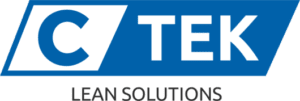How Applying Lean Six Sigma Can Help Your Company
Lean Six Sigma is a methodology that uses data to eliminate defects that might arise in your company’s manufacturing process. In order for a process to have achieved Lean Six Sigma status, it must be free of any defects, which means anything that does not meet a customer’s specifications or level of satisfaction. From lowering costs to increasing revenue, C Tek explains the many advantages that companies will see by applying this methodology to their business practices.
Increase in Revenue
An increase in revenue is one of the main benefits of applying the Six Sigma philosophy to your business practice. Companies can start to see an increase in their bottom line by developing their services, products, and other company features in line with principles of lean methodology. That includes streamlining their processes to minimize waste in producing and delivering services and products. The end result is that products and services are completed more quickly and efficiently at no extra cost to the company, but to the satisfaction and benefit of consumers.
Lower Costs
The Sigma methodology can also lower costs for companies in several ways. First, the methodology helps remove processes that generate waste. Waste is considered to be anything a company uses that consume excess resources but does not produce any end value. The methodology also gets rid of defects in services and products that otherwise cost the organization money, and they eliminate unnecessary actions from the production process.
Increase in Effectiveness and Efficiency
By identifying and eliminating waste, the lean methodology improves your organization’s performance in multiple ways. For starters, it maximizes the organization’s efforts in producing a valuable product or service to consumers. Additionally, it helps the organization direct revenue and resources from the improved process towards improving the business and helping the company expand. By improving efficiency, the organization can improve its processes and product delivery, which in turn creates a higher level of customer satisfaction.
Effective Teams and Employees
The Sigma methodology also fosters a sense of accountability and ownership among employees. In turn, they work more effectively, which makes them deliver better results and strive for self-improvement. By training employees in the practices of the Six Sigma methodology, companies have the tools and resources they need to eliminate defects in their end products and improve their production process overall.
Greater Customer Loyalty
Ultimately, the end goal is to make customers as happy as possible, as customer satisfaction is one of the most important criteria for determining the success of any company. Studies show that customers cite negative employee attitudes and poor product quality as their main reasons for not purchasing products from a company. However, companies that focus on using the Sigma methodology to better train their employees and deliver higher-quality products naturally have a higher rate of demand for their products and services, which also translates to a higher degree of customer loyalty. Companies can also conduct their own customer studies to identify the areas of business that are most important for customer satisfaction.
By applying the Lean Six Sigma methodology, C Tek shows that companies can start generating more revenue, streamlining their processes, and producing happier customers.
